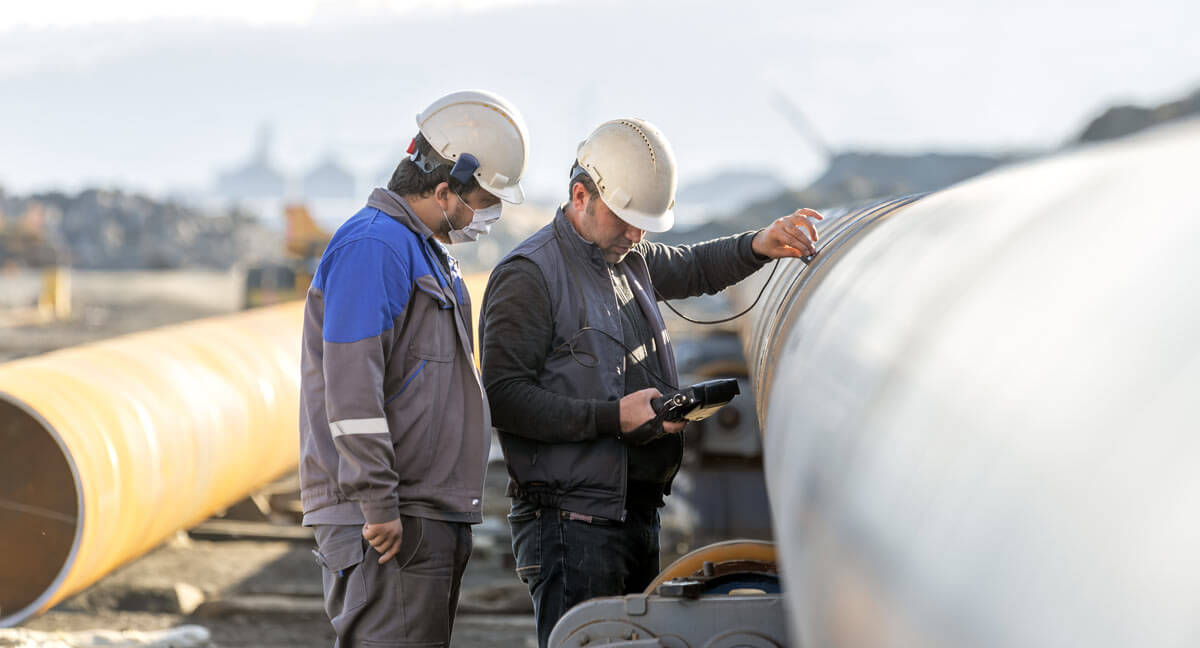The Significance of Thorough Welding Evaluation in Industrial Applications
In the realm of industrial applications, the relevance of meticulous welding examination can not be overstated. As we explore the multifaceted benefits of persistent welding inspections, one should take into consideration the wider implications on security, reliability, and cost-effectiveness in commercial procedures.
Enhancing Architectural Integrity
When it pertains to welding assessment in commercial applications, boosting structural stability is extremely important. The primary objective of welding assessment is to make sure that the welds can birthing the anticipated loads and tensions they will certainly run into in solution. This involves a detailed assessment of the welds' dimensions, alignment, and overall top quality, guaranteeing they meet the defined codes and standards. Specific assessment approaches, such as aesthetic examination, ultrasonic testing, and radiographic testing, are crucial in identifying concerns that might compromise the framework's safety and security and performance - Welding Inspection Madison.
The importance of maintaining structural stability in bonded structures can not be overemphasized. Badly executed welds can lead to devastating failures, resulting in pricey fixings, downtime, and even endangerment of human lives. Inspectors play a critical role in the lifecycle of industrial components, giving assurance that the welding process provides the desired strength and toughness.
Moreover, progressed technologies, such as phased selection ultrasonic testing and digital radiography, deal boosted capabilities in identifying possible weaknesses, enabling rehabilitative actions before concerns rise. By focusing on the integrity of welds via precise evaluation, industries can guarantee operational performance and extend the longevity of their infrastructure.
Recognizing Welding Defects
Identifying welding issues is a vital facet of ensuring the security and integrity of bonded structures. Common welding problems consist of porosity, fractures, insufficient fusion, and damaging.

Skilled examiners utilize both visual evaluation and advanced non-destructive screening (NDT) approaches, such as radiographic or ultrasonic testing, to identify these defects. The prompt recognition and correction of welding problems are imperative to preserve the structural integrity and longevity of commercial parts.
Making Sure Compliance Criteria
Compliance with established requirements, such as those supplied by the American Welding Society (AWS) and the International Company for Standardization (ISO), guarantees that welds satisfy minimum safety and top quality needs. These criteria incorporate a large array of standards, including material specs, welding procedures, and credentials of welders.
Regular audits and inspections are necessary in confirming conformity. Assessors should possess a comprehensive understanding of the relevant criteria and be skilled at making use of numerous non-destructive testing (NDT) techniques to assess weld top quality. By guaranteeing that welding methods straighten with conformity criteria, firms mitigate the threat of non-conformity, which can bring about legal obligations and safety and security hazards.
In addition, maintaining conformity not only safeguards structural stability but likewise boosts a company's credibility in the market. Stakeholders and customers are more probable to depend on firms that constantly show a commitment to high quality and security via strenuous compliance. Thus, ensuring compliance requirements is a critical element in the effective application of welding in industrial applications.
Minimizing Upkeep Costs

The application of advanced non-destructive screening (NDT) approaches, consisting of ultrasonic, radiographic, and magnetic fragment inspections, improves the capacity to detect subsurface imperfections without compromising the architectural integrity of elements. By utilizing these techniques, markets can considerably prolong the solution life of their equipment, minimizing downtime and the associated monetary burden of maintenance tasks.
Additionally, a robust welding assessment program supports the optimization of upkeep schedules, moving from responsive to predictive upkeep strategies. This positive technique not just stops unexpected failings but also improves source appropriation, ensuring that maintenance initiatives are focused and effective. Eventually, the financial investment in strenuous welding assessment is countered by the significant cost savings realized via decreased upkeep needs, adding favorably to the general operational effectiveness of industrial ventures.
Improving Precaution
Although safety and security is a critical concern in industrial procedures, achieving ideal safety standards requires a specialized emphasis on the quality and integrity of bonded frameworks. Welding evaluation plays an essential role in this context, as it ensures that all joints and connections satisfy stringent safety requirements. Comprehensive inspections aid determine problems such as splits, porosity, or incomplete fusion that can jeopardize architectural integrity. Such flaws, if left unaddressed, navigate here posture significant risks, potentially resulting in devastating failings.
Approaches like ultrasonic screening, radiographic testing, and magnetic particle assessment permit for detailed assessment without harming the framework. Applying a robust high quality control system that includes regular training for assessors and welders ensures adherence to established safety and security requirements.
Lastly, fostering a culture of safety within the organization emphasizes the relevance of comprehensive welding inspections. Urging open interaction and partnership among inspectors, welders, and engineers adds to a shared commitment to security excellence. Welding Inspection Madison. In doing so, markets can secure their operations, shield personnel, and preserve public count on

Conclusion
Thorough welding examination is important in industrial applications, significantly improving architectural honesty and reliability. Ultimately, the attentive execution of welding evaluations plays an essential function in maintaining operational performance and safety in industrial setups.
As we check out the multifaceted advantages of thorough welding inspections, one need to take into consideration the broader implications on safety and security, integrity, and cost-effectiveness in industrial procedures.
The main objective of welding assessment is to ensure that the welds are qualified of birthing the anticipated anxieties and lots they will come across in solution. Effective welding examination plays an integral duty in reducing these costs by ensuring the honesty and longevity of welds, therefore reducing the threat of premature failures.Thorough welding inspection is vital in commercial applications, dramatically enhancing architectural stability and dependability. Inevitably, the persistent implementation of welding assessments plays a vital function in keeping operational effectiveness and security in commercial setups.